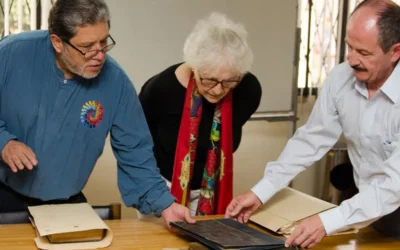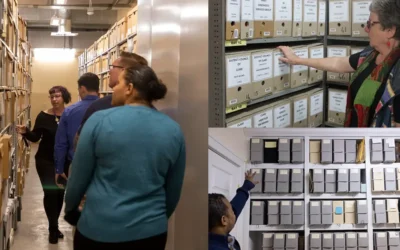Three Fundamental Digital Preservation Strategies
Margot Note
Digital files exist simply as data until they are rendered by application software, operating systems, and hardware platforms—making them vulnerable to format obsolescence and media decay. Unlike physical materials, digital files cannot survive what we call “benign neglect”.
As a consultant, I work with collections of paper files that have been stored untouched for decades but are still readable and in good condition. The same is not true with digital data. Ensuring their longevity is complicated and costly because they need routine preservation to survive. While analog records are still viewable if damaged, electronic records are unusable if corrupted.
The Challenge of the Digital Realm
Digital preservation typically centers on the choice of interim storage media, the life expectancy of a digital system, and the expectation to migrate the digital files to future systems while maintaining the functionality and the integrity of the original system.
Archivists need to ensure that digital files are still readable in their original format, which can be a Herculean task. Other challenges include “bit rot,” or the decay of information within a digital file; hardware, software, and format obsolescence; and server crashes and other disasters. The growth of digital content has created critical preservation problems that cannot be resolved with traditional archival methods. As archivists, we are at the very beginning of figuring out best practices to preserve our digital heritage. As a society, we are moving into an era where much of what we know today, much of what is coded and written electronically, may be lost forever without proactive preservation.
Refresh, Migrate, or Emulate
Three fundamental preservation strategies are refreshment, migration, and emulation. These approaches are designed to preserve the integrity of digital objects and to retain the ability for users to retrieve, display, and use them in the face of continually changing technology.
Refreshing involves periodically moving a file from one physical storage medium to another to avoid the obsolescence or degradation of the storage medium. Because physical storage devices decay, and because technological changes make older storage devices inaccessible to new computers, an ongoing form of refreshing is likely to be necessary for years to come. For instance, I advise my clients to keep electronic backups of their files on their computers, a hard drive, and the cloud. The hard drive should occasionally be checked to see if it is still functional. When the drive becomes several years old, the data it holds should be refreshed by moving it to a new hard drive.
Migration periodically converts data from one hardware or software configuration to another, or from one generation of computer technology to a subsequent generation, preserving the essential characteristics of the data. Migration will gradually bring files into a narrower variety of standard file formats. In my experience, each migration of data helps develop more robust standards, clearer workflows, and better practices. While migration can be a painful process, it does not have to be if it is well-planned.
Emulation is similar to migration, but focuses on the application software, rather than the files containing the data. Emulation combines software and hardware to reproduce the essential characteristics of one computer to another, allowing programs designed for a particular environment to operate in a different one. Emulation requires the creation of emulators, programs that translate code and instructions between systems. Under emulation, older data will run on contemporary computers.
Emulation can run the gamut from academic to entertainment. At Emory University, researchers can use an emulator to search Salman Rushdie’s old Macintosh to understand how he organized his writing and research files. On the opposite end of the spectrum, gaming enthusiasts can create emulators of classic arcade games. For example, my husband and nephews built a system to play Pac Man and Donkey Kong using code on a Raspberry Pi.
Surviving the Digital Dark Age
A significant gap in digital records created in the late twentieth and early twenty-first centuries already exists, and the long-term preservation of digital objects is a challenge facing not only the information sector, but also society as a whole. Led by archivists and other information professionals, institutions are developing initiatives aimed at preserving digital media. One hopes that by working together, we will survive the digital dark age.
Margot Note
Margot Note, archivist, consultant, and Lucidea Press author is a regular blogger, and popular webinar presenter for Lucidea, provider of ArchivEra, archival collections management software for today’s challenges and tomorrow’s opportunities. Read more of Margot’s posts here.
Similar Posts
Enhancing Collaboration; Methods for Archivists
Archivists can enhance collaboration through user-centric approaches and efficient processing methods based on customer service principles.
Navigating Selection in Archival Practice
The archival selection process is far from straightforward, given the limitations of long-term preservation and ongoing accessibility challenges.
Responsible Stewardship in Archival Practice
Responsible stewardship is a philosophy that guides the actions and decisions of archivists in safeguarding collective memory.
A Modern View of a City’s History via ArchivEra
Brief success story on City of Regina Archives’ use of ArchivEra to manage collections of legal, historical, administrative or financial significance
Hosting service
Enjoy all of the benefits of your Lucidea solution with secure, reliable, stress free hosting
Programs & incentives
No matter your size or budget, we’ve got you covered, today and tomorrow



